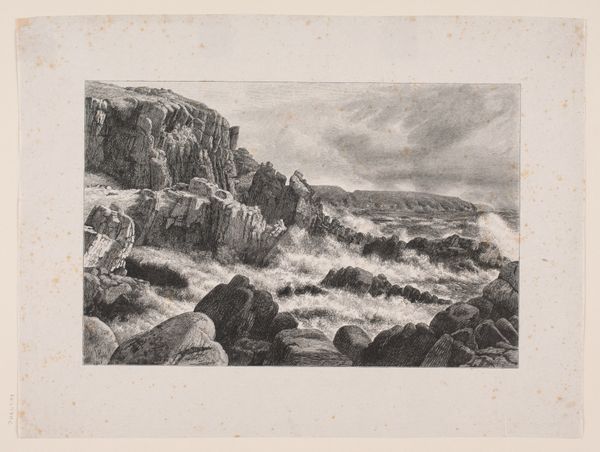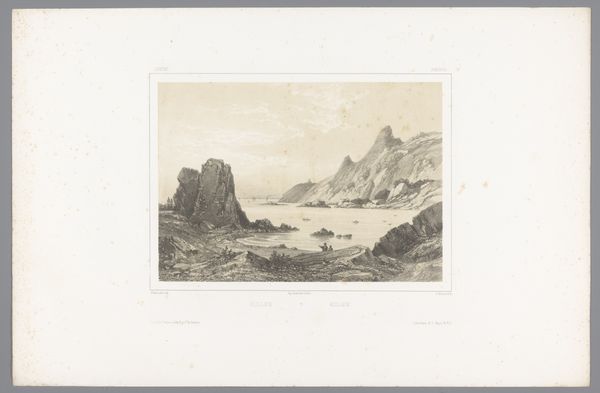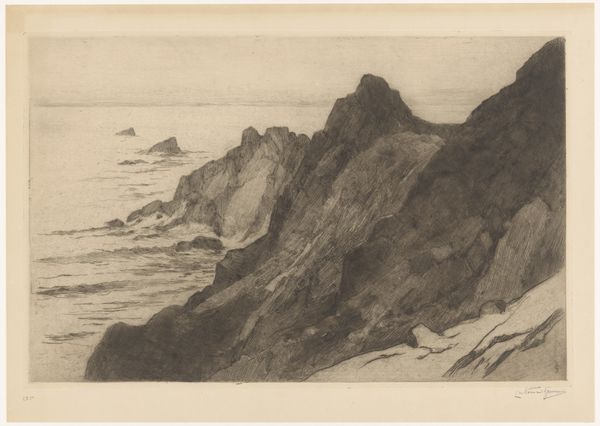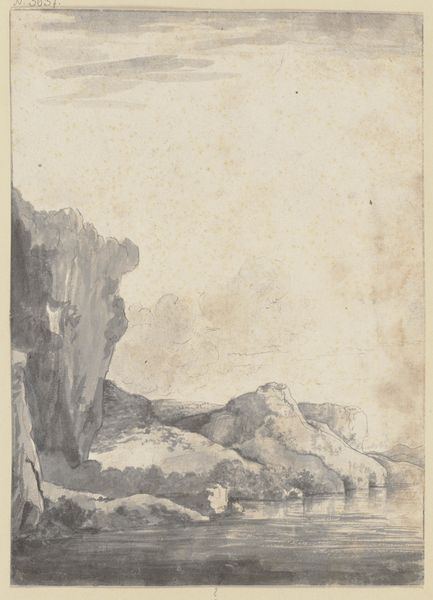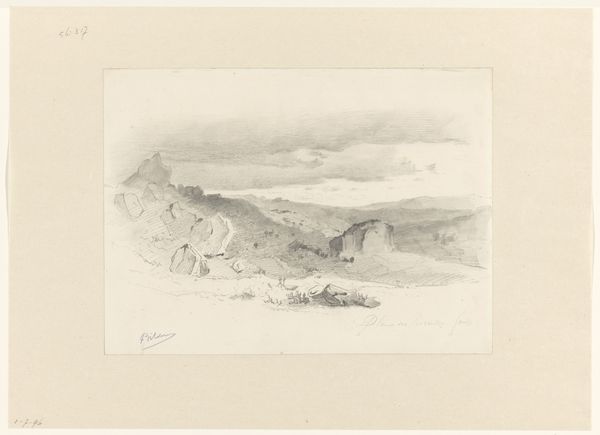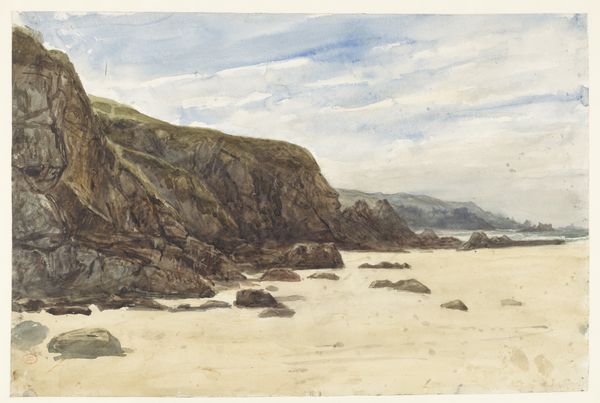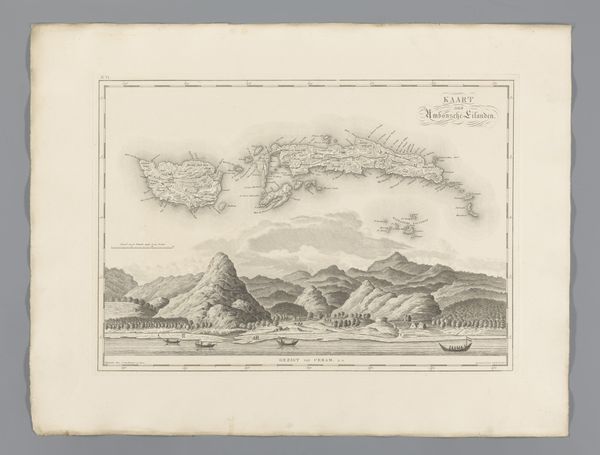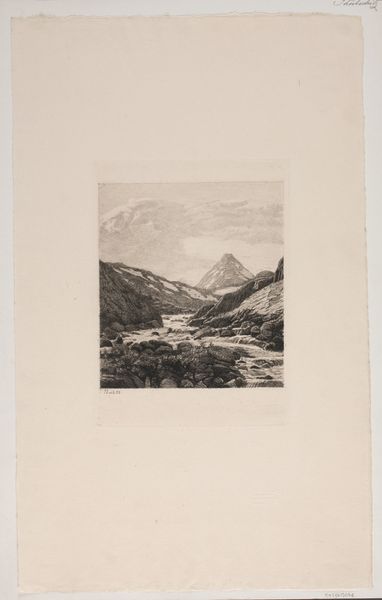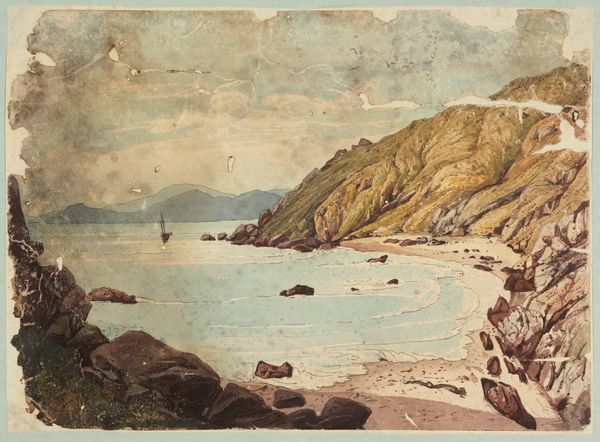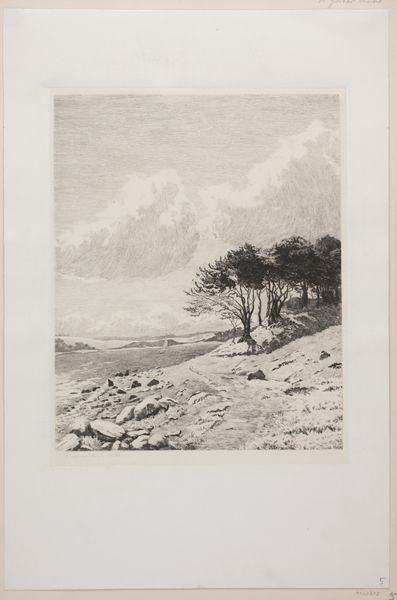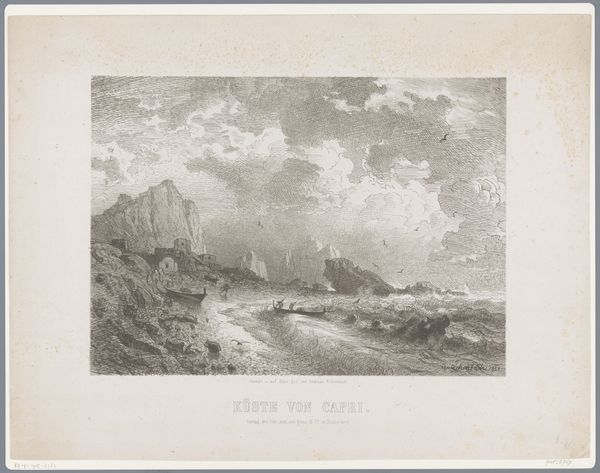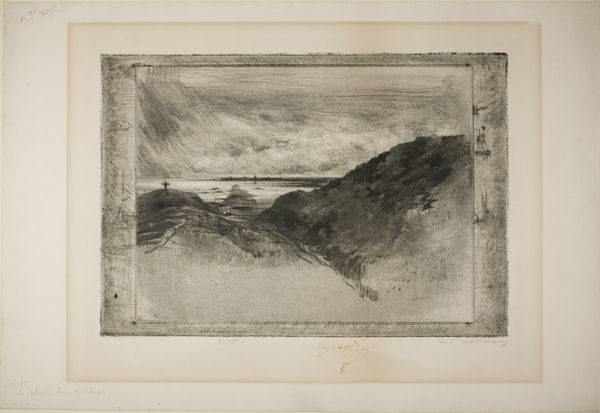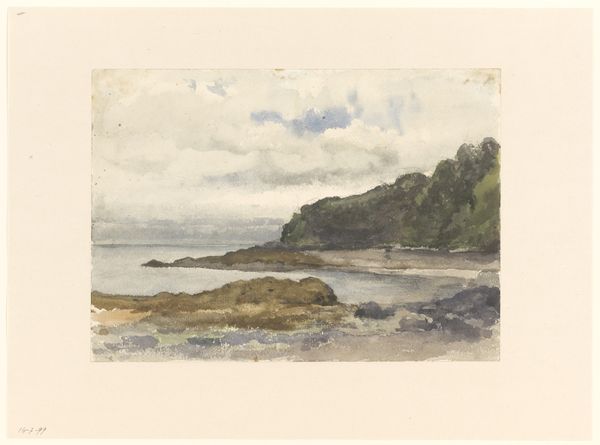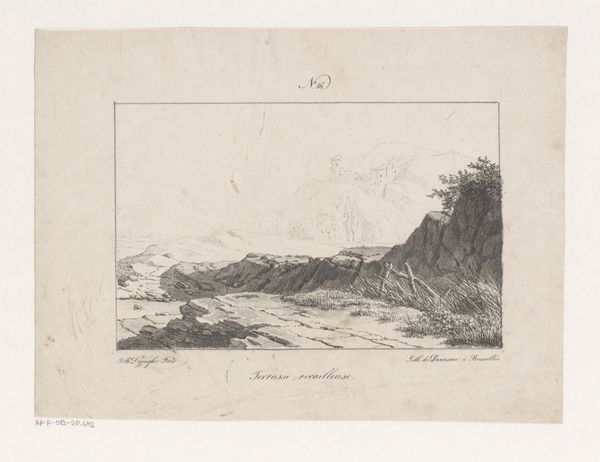
#
aged paper
#
toned paper
#
light pencil work
#
blue ink drawing
#
pencil sketch
#
old engraving style
#
personal sketchbook
#
watercolour illustration
#
sketchbook art
#
watercolor
Dimensions: height 321 mm, width 249 mm
Copyright: Rijks Museum: Open Domain
Curator: Looking at this watercolor landscape, I'm immediately drawn to the monochromatic grays and the light-infused clouds—a quiet sort of majesty. Editor: Indeed. What we have here is Willem Wenckebach's "Rocky Bay," dating from before 1894. It’s currently part of the Rijksmuseum collection. We see an impressive articulation of texture and atmospheric perspective. Curator: I agree; notice how Wenckebach utilizes the aged, toned paper to subtly amplify the overall mood of this work. There's a remarkable simplicity in the composition, a near abstraction. How do you perceive this choice influencing our reading of the landscape? Editor: Knowing Wenckebach’s social circles, his likely audiences were accustomed to grand, Romantic landscape paintings laden with explicit political or nationalistic themes. His scaling-down—both literally in terms of the sketch's size, but also metaphorically—can be read as an act of artistic rebellion, embracing intimacy. Curator: Interesting, an early intimate realism. For me, it evokes more personal reflections, through these shapes. Observe how the strategic deployment of light not only defines the forms but also suggests a kind of internal meditation. The play between the solid, textured rocks in the foreground and the softly rendered sky. Editor: That perspective is interesting considering the historical debates around landscape art during that period. Is the "landscape" an ideal location, or just rocks, sea and some seabirds like these, with no need for national or historic symbolism? Curator: It does make one pause and contemplate the function of pictorial elements in landscape art, then, and now. By de-emphasizing the literal or grandiose, is Wenckebach inviting viewers into a more nuanced relationship with space? Editor: This invites considering landscape’s role in the construction of social and national identity at the turn of the century. Wenckebach seems less invested in promoting a particular narrative or ideology tied to the landscape. Curator: A stripping-down, allowing for different interpretations. Well, seeing it as an opening rather than a closure— that adds another dimension for future interpretations. Editor: Yes, that’s what I find powerful. A small, relatively humble watercolor prompts a reevaluation of what we expect of landscape.
Comments
No comments
Be the first to comment and join the conversation on the ultimate creative platform.
